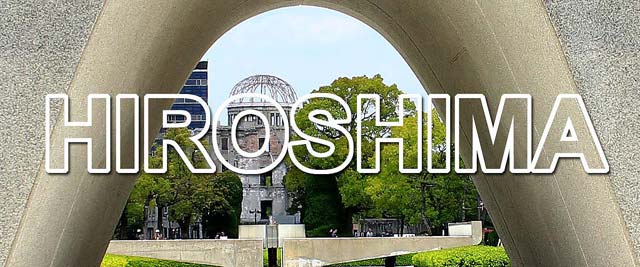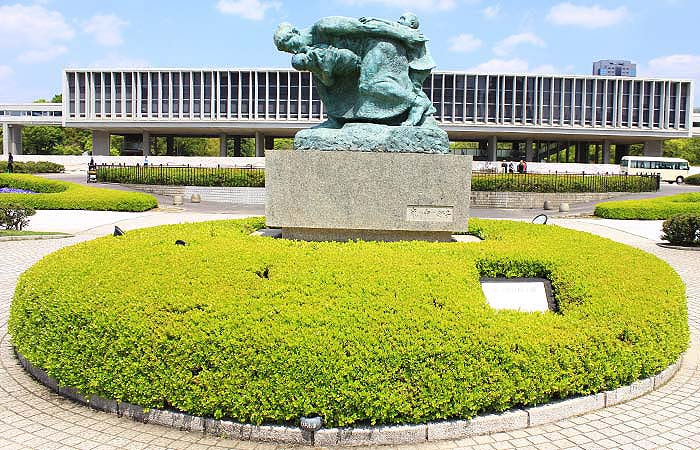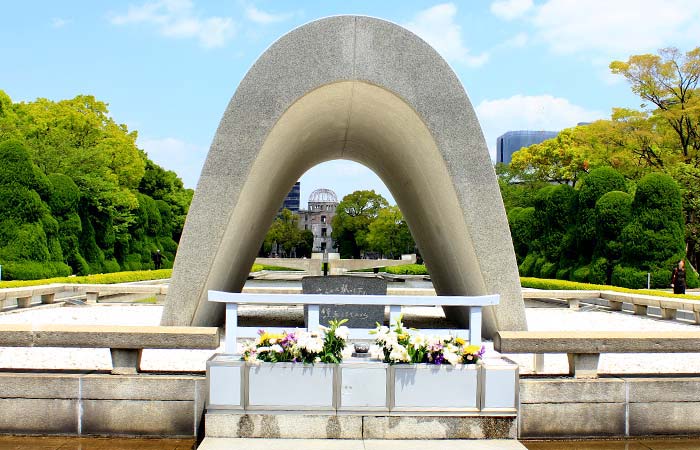


The Peace Memorial Park was created as a symbol of ever-lasting peace. It includes the A-bomb Dome, Children’s Peace Monument, Hiroshima Peace Memorial Museum and Cenotaph for the A-bomb Victims.

On 6 August 1945 the first atomic bomb to be used in the world, exploded approximately 600 metres above the Hiroshima Prefectural Commercial Exhibition Hall. This was one of the few structures to survive such a catastrophe. One bomb’s explosion killed more than 200,000 people and obliterated the city into ashes. The Exhibition Hall after the war was named the A-bomb Dome. Remnants of the building are a stark reminder of terrible devastation created by humans and a lesson for future generations to prevent this from happening again.

This striking monument was created in memory of the children who died as a result of the atomic bomb. The tall dome has several sculptural figures of children. On the top stands a bronze statue of Sadako Sasaki holding a gold crane above her head. At the age of 12, Sadako died of leukaemia from the radiation of the bomb. She folded 1000 paper cranes during her illness, hoping her wish to get better would come true. Sadako, then started another batch but didn’t complete it as she sadly died. The paper crane became a symbol of peace and hope. Annually, over 10 million paper cranes are offered from around the world to the memorial.

In the centre of the park is the Cenotaph. An epitaph is inscribed here, "Rest in Peace, for the error shall not be repeated". Through the arch of the Cenotaph, in perfect alignment is the Pond of Peace, the Flame of Peace and further in the distance the A-bomb Dome. They become linked together in one vision.